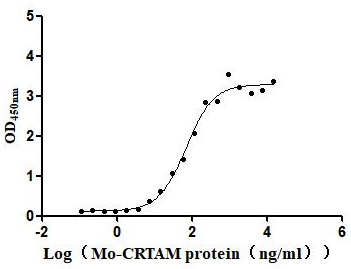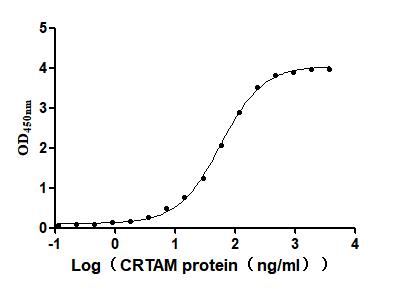Recombinant Human Tumor necrosis factor ligand superfamily member 14 (TNFSF14), partial
-
中文名稱:人TNFSF14重組蛋白
-
貨號(hào):CSB-MP023991HU
-
規(guī)格:¥1368
-
圖片:
-
其他:
產(chǎn)品詳情
-
純度:Greater than 90% as determined by SDS-PAGE.
-
基因名:
-
Uniprot No.:
-
別名:TNFSF14; HVEML; LIGHT; UNQ391/PRO726; Tumor necrosis factor ligand superfamily member 14; Herpes virus entry mediator ligand; HVEM-L; Herpesvirus entry mediator ligand; CD antigen CD258
-
種屬:Homo sapiens (Human)
-
蛋白長度:Partial
-
來源:Mammalian cell
-
分子量:48.3
-
表達(dá)區(qū)域:74-240aa
-
氨基酸序列DGPAGSWEQLIQERRSHEVNPAAHLTGANSSLTGSGGPLLWETQLGLAFLRGLSYHDGALVVTKAGYYYIYSKVQLGGVGCPLGLASTITHGLYKRTPRYPEELELLVSQQSPCGRATSSSRVWWDSSFLGGVVHLEAGEKVVVRVLDERLVRLRDGTRSYFGAFMV
Note: The complete sequence including tag sequence, target protein sequence and linker sequence could be provided upon request. -
蛋白標(biāo)簽:C-terminal FC-Myc-tagged
-
產(chǎn)品提供形式:Liquid or Lyophilized powder
Note: We will preferentially ship the format that we have in stock, however, if you have any special requirement for the format, please remark your requirement when placing the order, we will prepare according to your demand. -
緩沖液:Tris-based buffer,50% glycerol
-
儲(chǔ)存條件:Store at -20°C/-80°C upon receipt, aliquoting is necessary for mutiple use. Avoid repeated freeze-thaw cycles.
-
保質(zhì)期:The shelf life is related to many factors, storage state, buffer ingredients, storage temperature and the stability of the protein itself.
Generally, the shelf life of liquid form is 6 months at -20°C/-80°C. The shelf life of lyophilized form is 12 months at -20°C/-80°C. -
貨期:Basically, we can dispatch the products out in 1-3 working days after receiving your orders. Delivery time may differ from different purchasing way or location, please kindly consult your local distributors for specific delivery time.Note: All of our proteins are default shipped with normal blue ice packs, if you request to ship with dry ice, please communicate with us in advance and extra fees will be charged.
-
注意事項(xiàng):Repeated freezing and thawing is not recommended. Store working aliquots at 4°C for up to one week.
-
Datasheet & COA:Please contact us to get it.
相關(guān)產(chǎn)品
靶點(diǎn)詳情
-
功能:Cytokine that binds to TNFRSF3/LTBR. Binding to the decoy receptor TNFRSF6B modulates its effects. Acts as a ligand for TNFRSF14/HVEM. Upon binding to TNFRSF14/HVEM, delivers costimulatory signals to T cells, leading to T cell proliferation and IFNG production.
-
基因功能參考文獻(xiàn):
- the outcomes of this study provide compelling evidence that TNFSF14 is necessary to limit relevant steps in the pathogenesis of the metabolic syndrome and support the development of agonists of TNFSF14 signaling as attractive therapeutics for treating obesity and type 2 diabetes PMID: 29359470
- LIGHT is highly expressed and companied with severe inflammations in patients with coronary disease. LIGHT significantly enhanced inflammation response in oxLDL-induced THP-1 macrophages. PMID: 28642135
- LIGHT and LTBR interaction increases the survival and proliferation of human bone marrow-derived mesenchymal stem cells, and therefore, LIGHT might play an important role in stem cell therapy. PMID: 27835685
- Serum LIGHT levels correlate with disease progression and severity in interstitial pneumonia patients with dermatomyositis. PMID: 26448572
- LIGHT, via LTbetaR signaling, may contribute to exacerbation of airway neutrophilic inflammation through cytokine and chemokine production by bronchial epithelial cells. PMID: 25501580
- LIGHT controls TSLP to drive pulmonary fibrosis. PMID: 25680454
- The tumor necrosis factor superfamily molecule LIGHT promotes keratinocyte activity and skin fibrosis. PMID: 25789702
- proliferation and migration would be enhanced in Tca8113 cells with over-expressed TNFSF14 PMID: 26146063
- LIGHT, a TNF superfamily member, is involved in T-cell homeostasis and erosive bone disease associated with rheumatoid arthritis. PMID: 25460501
- Crystal structures of LIGHT and the LIGHT:DcR3 complex reveal the structural basis for the DcR3-mediated neutralization of LIGHT. PMID: 25087510
- regulation by NK cell licensing helps to safeguard against TNFSF14 production in response to healthy tissues. PMID: 25512551
- The findings suggest a new molecular determinant of LIGHT-mediated pathogenic changes in human bronchial epithelial cells. PMID: 25251281
- TNFSF14 has an effect on the activation of basophils and eosinophils interacting with bronchial epithelial cells PMID: 24782592
- Triggering of LIGHT induced production of pro-inflammatory mediators such as interleukin-8 and matrix metalloproteinase-9 while suppressing the phagocytic activity. PMID: 24044961
- GG carriers of rs1077667, of the LIGHT gene, with the highest risk for Multiple Sclerosis, had the lowest serum levels. PMID: 23037546
- although a limited number of activated T-cells infiltrate the tumor and initiate an immune response, the number of LIGHT + T cells infiltrating the tumor is very low PMID: 23514280
- findings show that LIGHT is not inhibited by the soluble RANKL receptor OPG and that LIGHT is a potent osteoclastogenesis factor that activates the Akt, NFkappaB and JNK pathways PMID: 23391709
- TNFSF14 was significantly increased in sickle-cell anemia, SCA treated with hydroxycarbamide,& HbSC. It could contribute to endothelial activation & inflammation in SCA. PMID: 22775554
- This study showed that expression of the death-triggering ligand LIGHT is increased in ALS spinal cords PMID: 22221541
- increased plasma levels in patients with atopic dermatitis PMID: 22519595
- INF-gamma can synergistically precede LIGHT-induced apoptotic processes through down-regulation of Bcl-2 expression, but not survivin expression. PMID: 21117871
- These data clearly indicate that ZFP91 is a key regulator in LIGHT-induced activation of non-canonical NF-kappaB pathway in LTbetaR signaling. PMID: 20804734
- Herpes simplex virus 1 gD interfere HVEM function by competing with its natural ligands and by downregulating HVEM. PMID: 20826693
- Increased potential for LIGHT receptor signaling, coupled with increased bioavailability due to lower decoy receptor-3 (DcR3) avidity, provides a mechanism for polymorphic variants in LIGHT to contribute to the pathogenesis of inflammatory diseases. PMID: 20592286
- mediates organ-specific donor T cells activation in GVHD PMID: 19826934
- suppresses tumor growth by augmentation of immune response PMID: 19716382
- There is over expression of genes related to immune and inflammatory responses, including cytokines such as TNFSF14 in interstitial cystitis PMID: 20096889
- When highly expressed, LIGHT is capable of promoting effector T cell proliferation and differentiation even in a regulatory T (Treg) cell-enriched, suppressive intestinal environment. PMID: 20042587
- These findings suggested that LIGHT might be involved in the progression of inflammatory bone destruction in rheumatoid arthritis. PMID: 19019090
- Effects in transgenic mice indicate that human LIGHT may function as a major regulator of T cell activation, and implicate LIGHT signaling pathways in inflammation focused on mucosal tissues. PMID: 11714797
- LIGHT (TNFSF14),5 its membrane-anchored ligand, was also present in atheromatous lesions and highest in regions rich in macrophage-derived foam cells. PMID: 11742858
- Role of calcium-signaling pathway in the transcriptional control PMID: 12215452
- LIGHT may act as an anti-apoptotic agent against TNFalpha-mediated liver injury by blocking the activation of both caspase-3 and caspase-8. PMID: 12393901
- LIGHT, a new member of the TNF superfamily [review] PMID: 12456019
- Data show that mRNA encoding LIGHT and its receptors [HVEM, LTbetaR, and TR6 (DcR3)] are present in placentas and cytotrophoblast cells at term. PMID: 12466117
- Soluble LIGHT blocks TR6-Fc costimulated proliferation, lymphokine production, and cytotoxicity of T cells in the presence of T cell receptor ligation. PMID: 12471113
- LIGHT-sensitized IFN-gamma-mediated apoptosis of MDA-MB-231 cells is probably through down-regulation of anti-apoptosis Bcl-2 family members; it could be caspase (especially caspase-3)-independent, even though extensive caspase activation was observed. PMID: 12767529
- LIGHT signaling is mediated through both death receptor and mitochondria pathways PMID: 15115612
- LIGHT-herpesvirus entry mediator mediated signaling as an important immune regulatory mechanism in mucosal inflammatory responses. PMID: 15210782
- Mechanisms protecting trophoblast cells from LIGHT-mediated apoptosis were studied. PMID: 15215185
- LIGHT expression by human intestinal T cells suggests the possibility that LIGHT may play a key role in regulation of the mucosal immune system. PMID: 15634882
- LIGHT protein can be activated on mucosal T cells through a gut-specific CD2-dependent signaling mechanism. PMID: 15634882
- Data suggest that LIGHT constitutively expressed in human melanoma cells and microvesicles may contribute to regulate T-cell responses to tumor cells. PMID: 15833878
- NF-kappaB signal plays a key role in LIGHT-mediated upregulation of CD86 expression. PMID: 15895390
- both LTbetaR and HVEM can discriminatively mediate the expression of different genes in cultured human umbilical vein endothelial cells, including LIGHT, a proinflammatory cytokine PMID: 15917993
- A transgenic mouse model resembling Crohn's disease (CD) suggests that up-regulation of LIGHT may be an important mediator of CD pathogenesis. PMID: 15944326
- LIGHT could serve as a molecular link between lipid metabolism, inflammation, and thrombus formation, which are all features of atherosclerotic plaques. PMID: 16186421
- platelet-derived LIGHT is biologically active and can induce an inflammatory response in monocytes and particularly within endothelial cells measured as up-regulation of adhesion molecules and release of chemokines PMID: 16861346
- Blockade of TNFSF14 signaling caused a substantial reduction in the expression of lymphotoxin beta receptor (LTbetaR)-controlled migration factors within the islets and disrupts organization of tertiary structures, leading to prevention of diabetes. PMID: 16934497
- LIGHT system may regulate early to middle stages of placental development via cell-specific, temporally programmed expression of the ligand and its receptors, and may also assist in preserving placental immune privilege. PMID: 17010447
顯示更多
收起更多
-
亞細(xì)胞定位:[Tumor necrosis factor ligand superfamily member 14, membrane form]: Cell membrane; Single-pass type II membrane protein.; [Tumor necrosis factor ligand superfamily member 14, soluble form]: Secreted.; [Isoform 2]: Cytoplasm.
-
蛋白家族:Tumor necrosis factor family
-
組織特異性:Predominantly expressed in the spleen but also found in the brain. Weakly expressed in peripheral lymphoid tissues and in heart, placenta, liver, lung, appendix, and kidney, and no expression seen in fetal tissues, endocrine glands, or nonhematopoietic tu
-
數(shù)據(jù)庫鏈接:
Most popular with customers
-
Recombinant Human Tumor necrosis factor ligand superfamily member 8 (TNFSF8), partial (Active)
Express system: Mammalian cell
Species: Homo sapiens (Human)
-
Recombinant Mouse Desmoglein-3 (Dsg3), partial (Active)
Express system: Mammalian cell
Species: Mus musculus (Mouse)
-
Recombinant Human Tumor necrosis factor ligand superfamily member 9 (TNFSF9), partial (Active)
Express system: Mammalian cell
Species: Homo sapiens (Human)
-
Recombinant Human C-X-C chemokine receptor type 4 (CXCR4)-VLPs (Active)
Express system: Mammalian cell
Species: Homo sapiens (Human)
-
Recombinant Mouse Cell adhesion molecule 1 (Cadm1), partial (Active)
Express system: Mammalian cell
Species: Mus musculus (Mouse)
-
Recombinant Mouse Cytotoxic and regulatory T-cell molecule (Crtam), partial (Active)
Express system: Mammalian cell
Species: Mus musculus (Mouse)
-
Recombinant Human Interleukin-2 (IL2) (Active)
Express system: Mammalian cell
Species: Homo sapiens (Human)
-
Recombinant Macaca fascicularis Zinc transporter ZIP6 isoform X1(SLC39A6),partial (Active)
Express system: Baculovirus
Species: Macaca fascicularis (Crab-eating macaque) (Cynomolgus monkey)

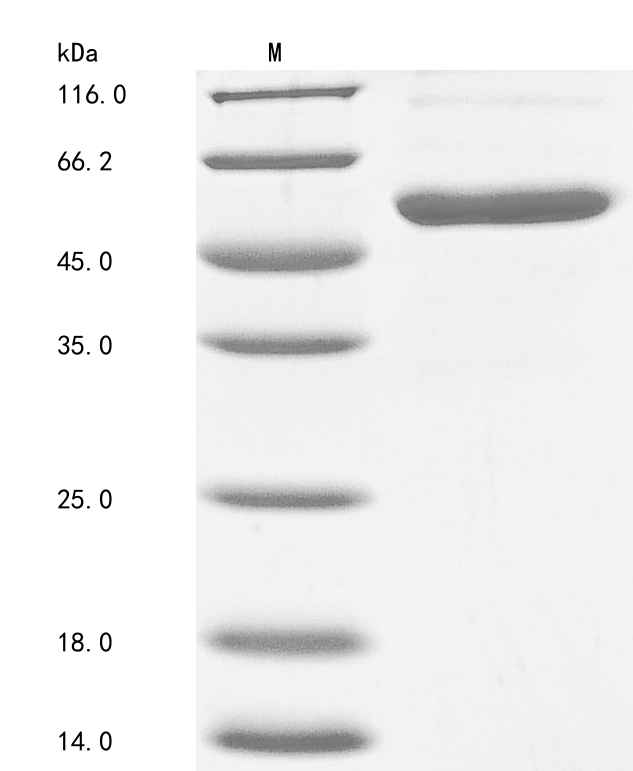

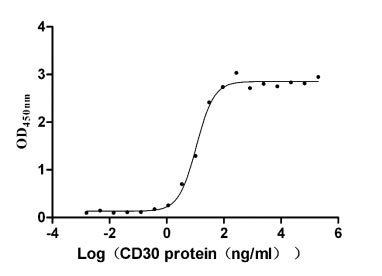
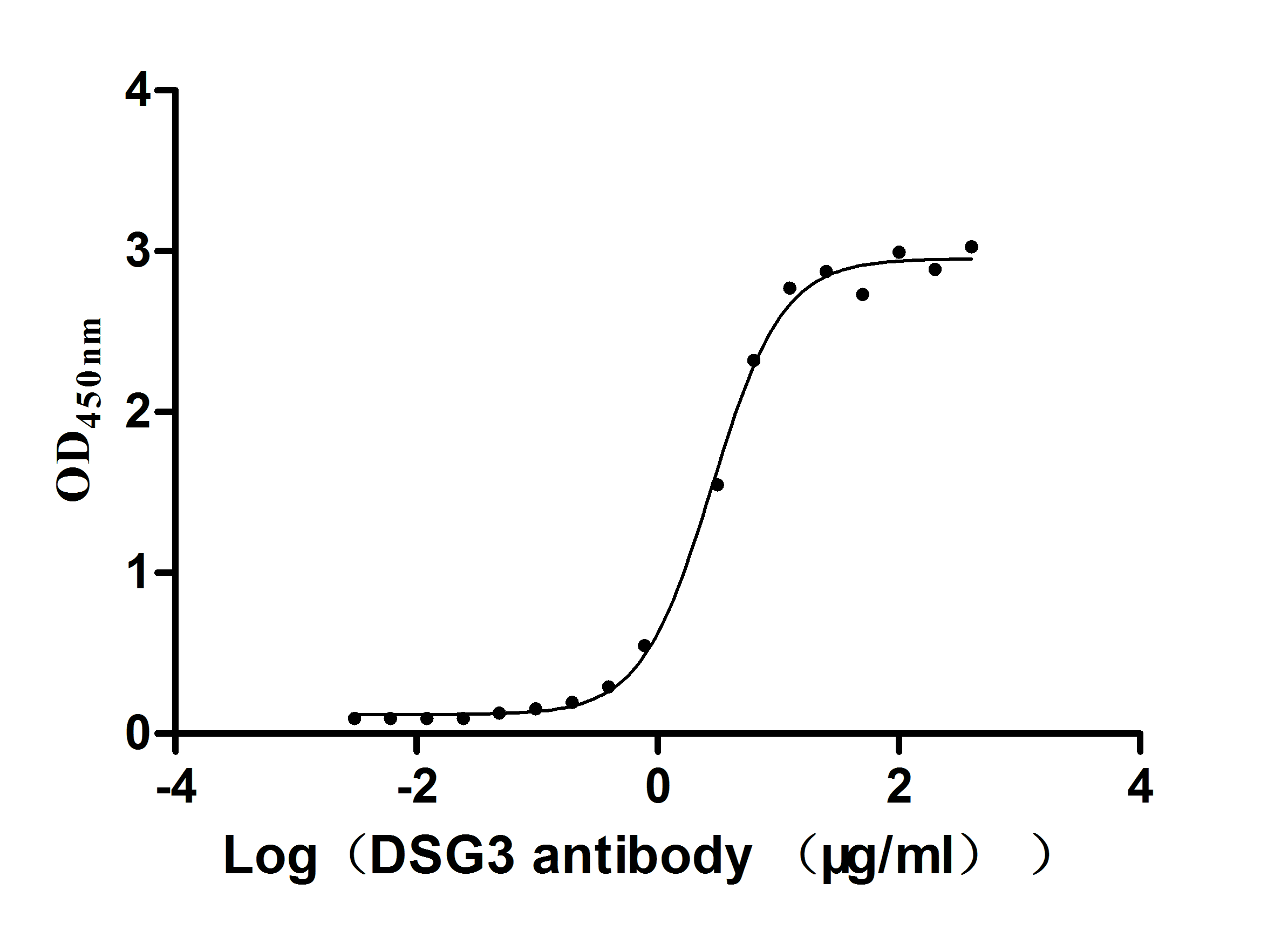

-AC1.jpg)
